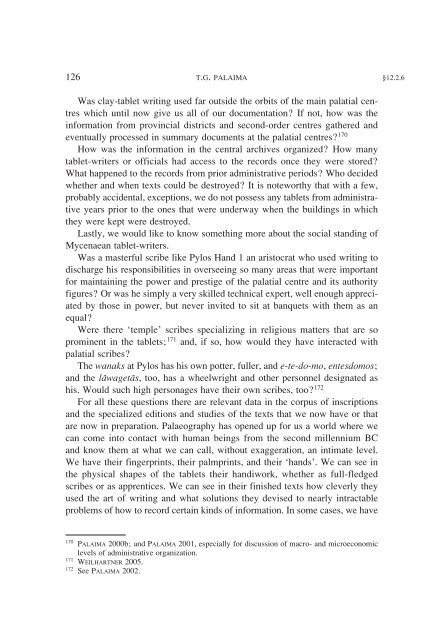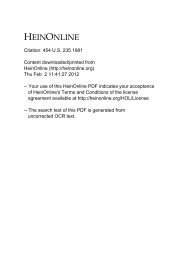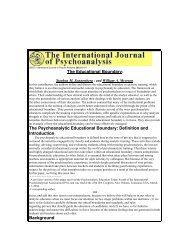A Companion to Linear B - The University of Texas at Austin
A Companion to Linear B - The University of Texas at Austin
A Companion to Linear B - The University of Texas at Austin
Create successful ePaper yourself
Turn your PDF publications into a flip-book with our unique Google optimized e-Paper software.
126 T.G. PALAIMA §12.2.6<br />
Was clay-tablet writing used far outside the orbits <strong>of</strong> the main pal<strong>at</strong>ial centres<br />
which until now give us all <strong>of</strong> our document<strong>at</strong>ion? If not, how was the<br />
inform<strong>at</strong>ion from provincial districts and second-order centres g<strong>at</strong>hered and<br />
eventually processed in summary documents <strong>at</strong> the pal<strong>at</strong>ial centres? 170<br />
How was the inform<strong>at</strong>ion in the central archives organized? How many<br />
tablet-writers or <strong>of</strong>ficials had access <strong>to</strong> the records once they were s<strong>to</strong>red?<br />
Wh<strong>at</strong> happened <strong>to</strong> the records from prior administr<strong>at</strong>ive periods? Who decided<br />
whether and when texts could be destroyed? It is noteworthy th<strong>at</strong> with a few,<br />
probably accidental, exceptions, we do not possess any tablets from administr<strong>at</strong>ive<br />
years prior <strong>to</strong> the ones th<strong>at</strong> were underway when the buildings in which<br />
they were kept were destroyed.<br />
Lastly, we would like <strong>to</strong> know something more about the social standing <strong>of</strong><br />
Mycenaean tablet-writers.<br />
Was a masterful scribe like Pylos Hand 1 an aris<strong>to</strong>cr<strong>at</strong> who used writing <strong>to</strong><br />
discharge his responsibilities in overseeing so many areas th<strong>at</strong> were important<br />
for maintaining the power and prestige <strong>of</strong> the pal<strong>at</strong>ial centre and its authority<br />
figures? Or was he simply a very skilled technical expert, well enough appreci<strong>at</strong>ed<br />
by those in power, but never invited <strong>to</strong> sit <strong>at</strong> banquets with them as an<br />
equal?<br />
Were there ‘temple’ scribes specializing in religious m<strong>at</strong>ters th<strong>at</strong> are so<br />
prominent in the tablets; 171 and, if so, how would they have interacted with<br />
pal<strong>at</strong>ial scribes?<br />
<strong>The</strong> wanaks <strong>at</strong> Pylos has his own potter, fuller, and e-te-do-mo, entesdomos;<br />
and the lawagetas, <strong>to</strong>o, has a wheelwright and other personnel design<strong>at</strong>ed as<br />
his. Would such high personages have their own scribes, <strong>to</strong>o? 172<br />
For all these questions there are relevant d<strong>at</strong>a in the corpus <strong>of</strong> inscriptions<br />
and the specialized editions and studies <strong>of</strong> the texts th<strong>at</strong> we now have or th<strong>at</strong><br />
are now in prepar<strong>at</strong>ion. Palaeography has opened up for us a world where we<br />
can come in<strong>to</strong> contact with human beings from the second millennium BC<br />
and know them <strong>at</strong> wh<strong>at</strong> we can call, without exagger<strong>at</strong>ion, an intim<strong>at</strong>e level.<br />
We have their fingerprints, their palmprints, and their ‘hands’. We can see in<br />
the physical shapes <strong>of</strong> the tablets their handiwork, whether as full-fledged<br />
scribes or as apprentices. We can see in their finished texts how cleverly they<br />
used the art <strong>of</strong> writing and wh<strong>at</strong> solutions they devised <strong>to</strong> nearly intractable<br />
problems <strong>of</strong> how <strong>to</strong> record certain kinds <strong>of</strong> inform<strong>at</strong>ion. In some cases, we have<br />
170 PALAIMA 2000b; and PALAIMA 2001, especially for discussion <strong>of</strong> macro- and microeconomic<br />
levels <strong>of</strong> administr<strong>at</strong>ive organiz<strong>at</strong>ion.<br />
171 WEILHARTNER 2005.<br />
172 See PALAIMA 2002.

















